#The Machine stops
Explore tagged Tumblr posts
Text
Got a bit of a different bookbinding post today. @renegadeguild got an ask from a new binder saying they were intimidated by everyone's gorgeous binds (me too, actually, some of you guys are scary good), and so they've asked people to share their first binds. And I realized I'd never even taken photos of my first one, so here it is, warts and all:
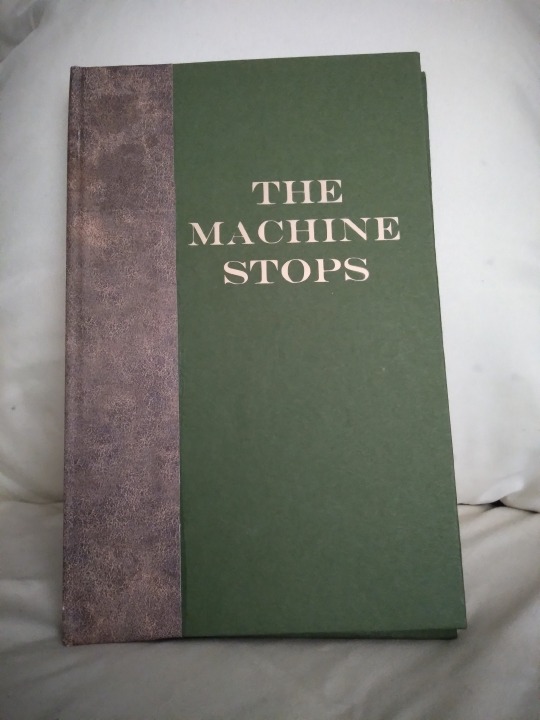
This is E.M. Forster's The Machine Stops, a public domain scifi short story that you can read for free at the link. The first reason I chose it was that it's an interesting story, and I'd bought a print-on-demand copy a few years previously that was just terrible. Baffling cover choices, basic errors in the typeset (like quotes that face the wrong way), weird size that didn't fit on my shelf; just not a good product. I couldn't do it with more indifference than the PoD people. The second reason was that I was too intimidated by the thought of asking a fic writer if I could bind their story and then producing something with a thousand sloppy beginner mistakes, and then they'd want to see photos and I'd have to show them this and it would have been mortifying, but Forster has been dead since 1970 so I could not disappoint him. It was very freeing. I bound it in 2021 as an experiment, to see if I liked this hobby enough to stick to it. The cover is green cardstock and faux leather scrapbook paper that I bought at... probably Hobby Lobby. I added the title later, as a practice project when I first got my Cricut; for the first two years of its existence it had a blank cover.
There are more photos under the cut!

In this photo we can see:
--Too much glue when attaching the leather-print paper, so it oozed out onto the cover.
--Cricut font too thin and too much heat/too long of a press, so the letters have gaps and the glue also oozed out here. It's a continuing theme with this bind.
--I tried to use a bone folder to give it a sharper hinge crease and accidentally pressed too hard and tore a hole in the paper; you can see this in the little white vertical line near the top of the hinge
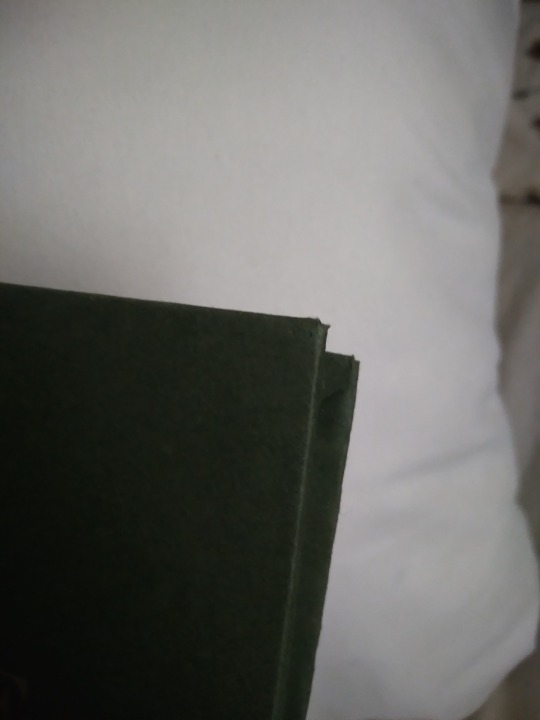
The fore edge is not square. I actually don't remember why this happened. I may have eyeballed the board position when I made the case, or the paper may have slipped while the glue was wet, or I cut it crooked and didn't notice till later. Either way it's bad enough that the book doesn't stand on its own. There was a crooked man/who walked a crooked mile/and found a crooked sixpence/against a crooked stile./He bought a crooked cat/which caught a crooked mouse/and they all loved together in a little crooked house, and I bet they read this little crooked book from their little crooked library.
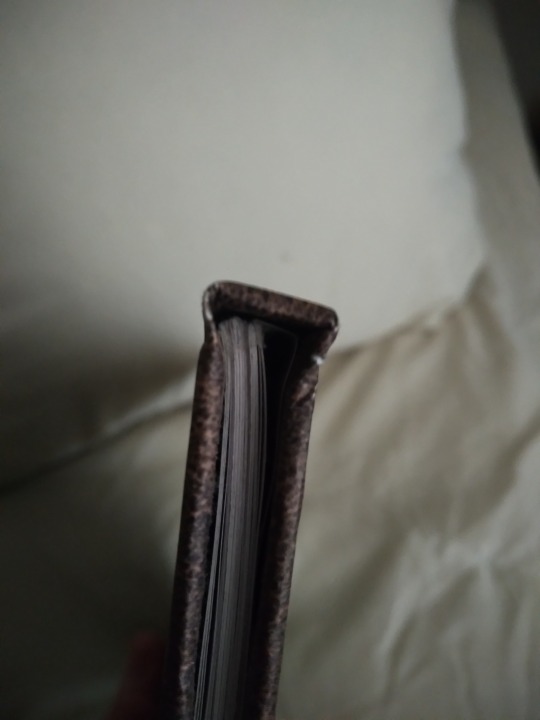

Top view, you can see that the case is too big and the text block doesn't sit straight in it. It has no endbands or bookmark, and it's hard to see in this photo but there's glue on the top of it, at the spine. This still happens to me but I know how to trim books now so this bit gets cut off. You can also see that the scrapbook paper has some cracks where its white core is visible. This is why I do cloth or actual faux leather on the spines now. Endpaper shows uneven trim (did I not use a ruler for this??), too much glue causing major seepage, and it doesn't sit evenly in the case. I'm not sure if this is because of the case itself being crooked, a badly-trimmed endpaper, or if the text block is also crooked. Or it may be a combination of all these factors. Unclear.
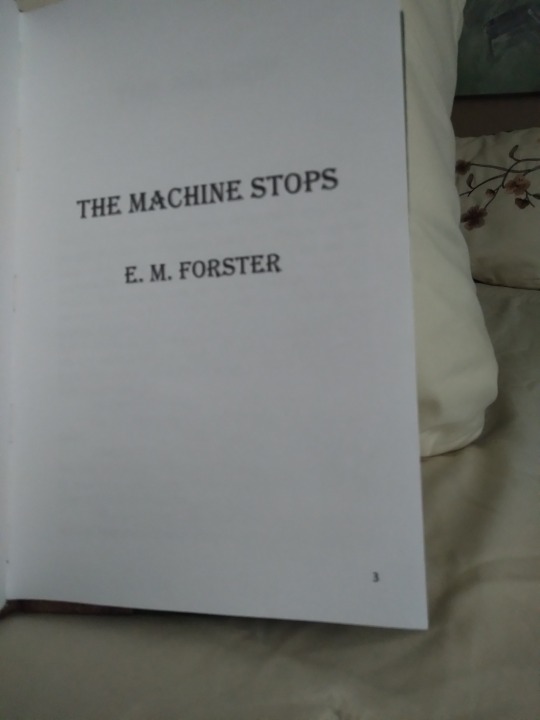
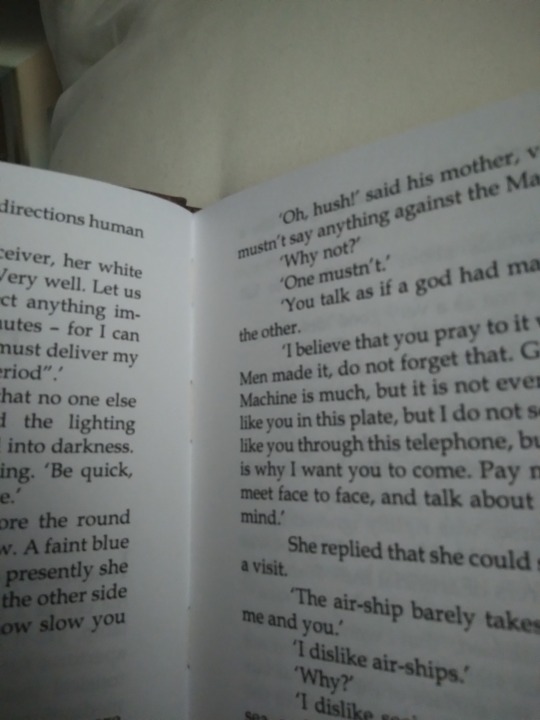
Typeset photos! Here we see:
--Title page has a page number on it. This is a pet peeve of mine and I fixed it after this book.
--There is no half title, summary, or metadata. All my later binds have these things.
--It's typeset in Times New Roman. Unlike many I don't actually hate this font but reading it reminds me of being in high school so this is the only book I used it for. Baskerville is my beloved now. The font is also much bigger than it should be. It's not huge but it's like a large print book so it feels weird for me to read it.
--Lol what are margins
--Lol what are page headers
--Actually I think I left the headers out so it wouldn't have a header on the first page of each chapter, because I knew about page breaks but not section breaks at this time.
--It's on regular-ass lightweight printer paper. There's nothing wrong with this but I switched to heavier weight paper shortly after to help with bleed-through and the light stuff feels so flimsy now.
--I didn't understand how Word's book fold worked at this time, so when I had to set the sheets per booklet and it had an option for 4, I chose that thinking it would give me 4 sheets of paper (16 numbered pages) per sig. It did not do this. It gave me 4 numbered pages per sig. So every signature is 1 sheet of paper. Every page is its own signature. I am still mad about this but it sure drove home how the setting works and also how to make kettle stitches since you make one after every sig. A book of 48 pages has 12 signatures which is just ludicrous.
--There's no photo of this but it has a piece of printer paper on the spine because I didn't have mull. I did use PVA though. Lots and lots of PVA.
--It's stitched with regular sewing thread, which means it doesn't have much swell for a book with that many sigs, but it's less sturdy and more likely to tear the paper.
And that's that! It probably sounds a bit like I was tearing it to shreds but I actually love this book quite a lot. I learned so many things that I applied to my next binds, it was an invaluable experience. It let me fall in love with the hobby so I could make the awesome things I make now. I've got those all posted on my main blog under the tag #snek makes books, or you can see them all on my side blog @papersnakepress. For a first book it's functional and readable, and still better than the PoD copy I had before. I've been thinking of doing a rebind as a sort of progress gauge, actually. Maybe next year.
#bookbinding#snek makes books#the machine stops#it's not winning any beauty contests#or technical skill contests either#but it's mine and i love it#first bind
92 notes
·
View notes
Text

Even before Stanislaw Lem, E.M. Forster wrote in his 1909 novella “The Machine Stops” about iPads, email, and Zoom: one of the main characters, Vashti, speaks to her son Kuno, who lives on the other side of the world, via a glowing round plate she holds in her hand. After the conversation she catches up on the flood of electronic messages that have arrived in the meantime and then uses the plate to give a short lecture to a remote audience.
11 notes
·
View notes
Text

E.M. Forster talking about enshittification circa 1909
Passage from "The Machine Stops" by E.M. Forster, 1909
10 notes
·
View notes
Text

#short stories#short story#the machine stops#e.m. forster#em forster#english lit#english language lit#20th century lit#have you read this short fiction?#book polls#completed polls
9 notes
·
View notes
Text
“Cannot you see, cannot all you lecturers see, that it is we that are dying, and that down here the only thing that really lives is the Machine? We created the Machine, to do our will, but we cannot make it do our will now. It has robbed us of the sense of space and of the sense of touch, it has blurred every human relation and narrowed down love to a carnal act, it has paralysed our bodies and our wills, and now it compels us to worship it. The Machine develops — but not on our lines. The Machine proceeds — but not to our goal. We only exist as the blood corpuscles that course through its arteries, and if it could work without us, it would let us die. Oh, I have no remedy — or, at least, only one — to tell men again and again that I have seen the hills of Wessex as Ælfrid saw them when he overthrew the Danes."
— EM Forster, The Machine Stops (1909)
11 notes
·
View notes
Text
the Machine is basically a more dysfunctional Rogue Servitor
2 notes
·
View notes
Text
Hello, tumblr. I have read a thing and I am thinking about it and therefore, I have a very important message for you.
GO OUTSIDE!! SMELL THE FLOWERS! LOOK AT THE SKY!! IT’S SO BIG AND BEAUTIFUL AND BLUE! GO SOMEWHERE! TALK TO SOMEONE! TRY SOMETHING NEW! IT MAY BE HARD BUT LIFE IS HARD! If it isn’t, are you really living?
I don’t want us to be a civilization of people glued to their chairs, to their beds, and especially to our phones and devices. I hope you don’t either.
(the thing I read is The Machine Stops, a short story from the early 20th century that feels terrifyingly relevant)
3 notes
·
View notes
Text
The Machine Stops by E. M. Forster
First published in the Oxford and Cambridge Review, November 1909
The Airship
2. The Mending Apparatus
3. The Homeless
For all you Halloweenistas - here have a scifi from 1909 (top link to .pdf), complete with audio-files. The work is Public Domain, so no worries.
3 notes
·
View notes
Text
Was Vashti a Morlock ... ?
Today, I'm considering the possibility that EM Forster's "The Machine Stops" is actually set in the same world as Wells's "The Time Machine".
Consider.
Both stories posit deep-future worlds that have experienced social change we would find disorienting. Both have canonical subterranean societies. Both also have a surface-dwelling population who are isolated from the undergrounders, and relations seem to have a hostile edge. The Time Traveller asserts that Morlocks predate on the Eloi; meanwhile, according to Kuno, the Machine will directly-attack any surface dweller who gets too close.
Of course, this idea leads to the amusing conclusion that Vashti and Kuno are actually Morlocks - though, Vashti is described as being short and very pale, which actually does (slightly) fit with what little we see of the Morlocks in "Time Machine". (Neither she nor Kuno are described as being furry, but on the other hand, neither of them is described as not being furry either, so make of that what you will!)
The inconsistencies are that Vashti's world is described as brightly-lit, at least up until the end - though, it is notable that she turns the lights off when she's on the videophone thing to Kuno, and also there is my speculation that Morlock eyes actually work in what we'd consider the infrared. Maybe it's brightly-lit to Vashti, but it wouldn't be to us. (A tangential speculation, in this case, is to wonder whether the shift to seeing in the infrared happened naturally, or whether it was deliberately-engineered at some point - perhaps as a cost-saving measure for lightbulbs or something. There is more-than-a-suggestion in "The Machine Stops" that the population are subject to a program of eugenics, though its intentions are ones we would find surprising even for eugenicism.) The other major inconsistency is that the Time Traveller never sees any airships - that said though, perhaps he's simply in an area which isn't under any Machine-regulated flightpaths, so in that scenario, of course he wouldn't, would he?
Also the Time Traveller's 802,701 AD is described as being uncomfortably warm, whereas Vashti and Kuno both consider the aboveground world to be cold and bitter - but, this could simply be an acclimatisation effect? Living underground, Vashti is simply used to it being very warm? Given that the Machine civilisation is subterranean, it could be that we would consider it very warm in their tunnels and pods. After all, temperatures start to rise the deeper you go, as you're getting closer to the mantle (and, ultimately, the Earth's inner core).
Another detail of similarity between the two settings is that the Morlocks' world connects to the surface through apertures that the Time Traveller compares to wells. The old access tunnel that Kuno finds distinctly-reminds me of one of those Morlock "wells", complete with the rung-steps up the inside.
One more possibility is that the Time Traveller arrived some time after the Machine stopped; this would explain both the disrepair of what infrastructure he observes, and also possibly the Eloi-phagy. After all, following the collapse of the Machine civilisation, its survivors are food-insecure! (This, of course, assumes we accept the Time Traveller's interpretation of the Morlocks as cannibals; as I've discussed before, I'm not convinced of that.)
The one remaining detail that doesn't quite fit is that the air of the aboveground world of the Machine is apparently somehow toxic, and the Time Traveller has no difficulty breathing. But perhaps the toxicity is overstated, and Vashti and Kuno are simply too used to a highly-filtered gas mix? There is also some evidence in the text that the Machine, or its agents in whatever government their civilisation has, have been lying about just how toxic and dangerous the surface world is. Kuno's experience proves that some sort of human life is still possible up there, and indeed some passages imply that he may have eventually been able to adapt to the outer air in time.
In fact, the narrative may hint at an alternative explanation for the "toxic" air. When Kuno tries to open the pneumatic plug at the top of the shaft, he and the plug are apparently blown clear of the shaft, popped out like a cork from a bottle. And, the air from the shaft is at such a flow-rate that it's able to keep his respirator floating aloft above it for several hours. It's not clear why exactly the catacombs were designed like this, but it does seem clear that the air pressure inside is much higher than out on the surface of the Earth.
When Machine-denizens emerge onto the surface and feel ill, are they actually being poisoned, or are they experiencing a form of altitude sickness? One that perhaps the respirators mitigate by supplying extra oxygen? Perhaps the cause for the collapses Machine-people apprarently suffer on the surface isn't chemical toxicity, but rather something like a pulmonary embolism caused by a sudden change in air pressure? Perhaps if they had time to acclimatise more gently, they might be fine.
Anyway, all of this is far from proven, but it's an entertaining scenario nonetheless.
4 notes
·
View notes
Text

“We created the Machine, to do our will, but we cannot make it do our will now. It has robbed us of the sense of space and of the sense of touch, it has blurred every human relation and narrowed down love to a carnal act, it has paralysed our bodies and our wills, and now it compels us to worship it.”
——
E. M. Forster, The Machine Stops 📖
#Art 🎨 by Daniel Stolle
https://www.danielstolle.com/the-machine-stops
14 notes
·
View notes
Text
Just read 'The Machine Stops' by E. M. Forster and I think that it might have fucked me up more than I could have anticipated 🫠
I literally just picked it up on a whim in the library, I did not CONSENT TO BEING SO DEEPLY RUMBLED BY A 96 PAGE BOOK!
4 notes
·
View notes
Text


I've got another completed Binderary book to show off today. Back in 2021 I bound my first book, a copy of E.M. Forster's The Machine Stops. I made a post about it last year that you can read right here, if you want. As a first bind, it had a number of issues that I've since learned how to avoid and I've wanted for a while to revisit it and give it a more competent treatment. So one of my Binderary projects was a rebind.
The cover that you see up above is dark green book cloth around the edges with green-and-white printed scrapbook paper in the center, and silver foil htv for the title. Both pieces are scraps from other binds, which is a trick I like to pull with smaller books like this one. It's a legal quarto, far more appropriate for a short piece than the folio size I chose the first time around.
Have a look under the cut for more photos!



I chose mitered corners for the book cloth because it's an effective work-around for using up scraps because you don't need one continuous piece of material for them. I haven't seen anyone else doing them this way, and though I've done a handful like this all of them have been fic. One of the reasons I do public domain binds is so that I have... I guess decoy books? Sometimes people want to see what I do and I'm not always comfortable either explaining the concept of fanfic to them or answering questions about why there's so much queer sex in it. And I want to show off my mitered corners without that risk, so. Here we are. I like to think that Forster, a gay man, might think it was funny that I was using his story in particular to do this.
Other improvements over my original edition: No more paper spine! Title on the spine! Endbands! Though it's still too skinny for handmade ones, and too skinny for a ribbon. Can't have everything, I guess.

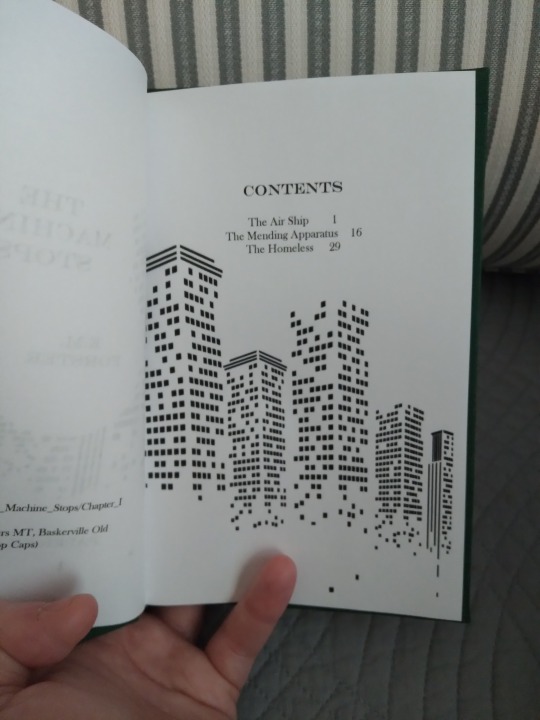
The endpapers are this bold scrapbook paper print. Feels very vintage. I never would have chosen them if I hadn't had the cloth borders; they would've been way too bold if I'd used that printed cover paper on its own. The title page was repurposed from another project. I had actually made it as an alternative option for you're like a tattoo, but the recipient preferred another design. I agree with their choice, and it feels more appropriate for this story about a lonely dying world that for their sexy sweet modern fic. I'm glad I got to use it for something though.

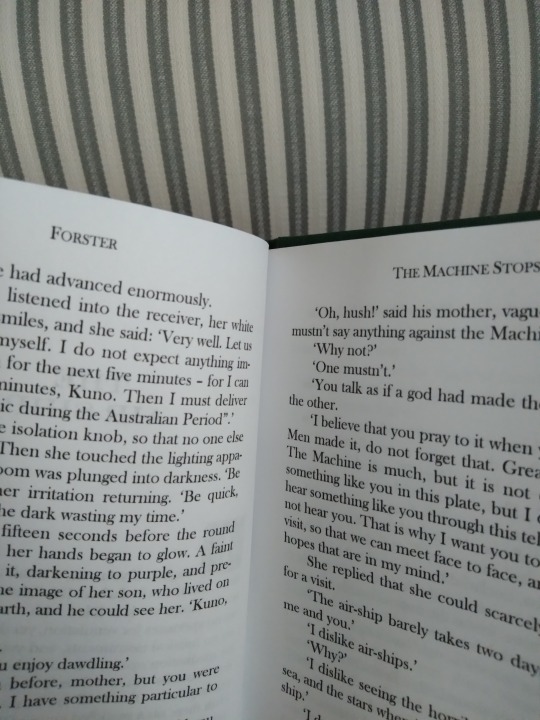
More improvements! Drop capitals! Page headers! No more page numbers on pages where I don't want them! This was a full re-typeset since it's for a different size paper. Hilariously, it's almost the same page count as the other edition, because I also reduced the text size. The original was in 12pt Times New Roman, this one's 10pt Baskerville. But it looks so much better.
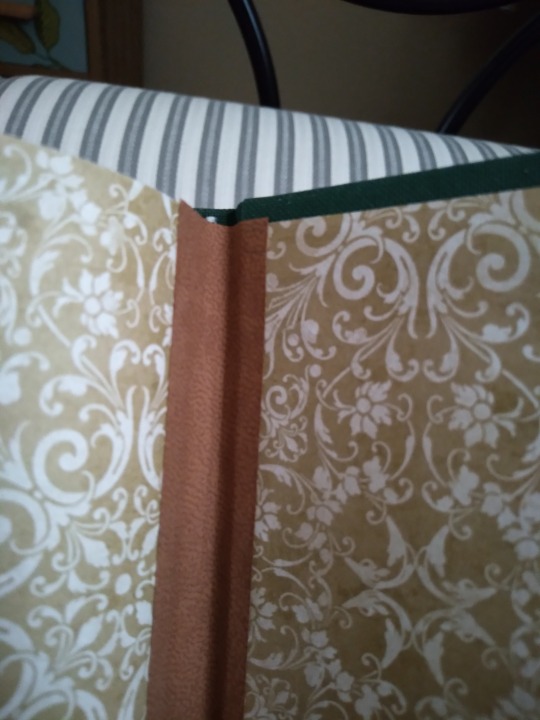

Lest we succumb to hubris, the book gods send us the occasional disaster. It is frustrating but in a funny way that my new and improved, highly-polished bind of the same story had one. And an entirely new-to-me one at that. Somehow when I was casing this in, I got the back endpaper way too far into the hinge, creating an ugly ridge at the crease and a strip of naked board at the for edge. I case with PVA, which dries quickly, and I live in a desert, which exacerbates the problem. There was no peeling up and re-laying; it was not possible without totally destroying the endpaper, and I didn't want to do that. So I used a strip of thin faux leather to cover and reinforce the hinge, and a strip of the same book cloth at the fore edge to cover the bare board. Both were scraps, too small to be of much use in another cover, which is fitting considering how much of the rest of this book is also scraps. It honestly doesn't look half bad, in my opinion. Unconventional, but a lot of things about hobby bookbinding are.
And that's The Machine Stops! It was very nearly exactly four years ago that I bound it the first time. Bindaversary, and well as Binderary? I'm very glad I did it, it was totally worth it to have something I can show off now that my skills have improved.
#bookbinding#snek makes books#the machine stops#e m forster#public domain binds#i don't usually tag authors but public domain binds never get any traction anyway#so i might as well
3 notes
·
View notes
Text
Plato's cave is no longer an allegory it is a thing we have built around ourselves
when is the last time you looked up and saw space? Experienced the stars? you can't anymore all you can see is videos of it. Shadows on your wall.
#platos cave#live from platos cave#plato#shitpost#just thinking thoughts#the machine stops#read the machine stops also#sci fi#light pollution#pollution
5 notes
·
View notes
Text
This is very cool but it gives me the opportunity to talk about something that's been bugging me for ages:
People comparing everything vaguely dystopian to black mirror.
Please stop doing this, it's very annoying and usually incorrect. Black Mirror is not a single theme or genre, each episode explores a different dystopian concept but other than that they're all over the place.
Dot and Bubble may have been inspired by the concepts of one or more black mirror episodes, but a more apt comparison would be The Machine Stops, a short story published in 1909 (yep, over 100 years ago) by E. M. Forster about a future version of humanity who has been forced to live below ground due to the uninhabitability of the surface.
The way in which it is similar to Dot and Bubble is that everyone communicates via a form of video call (bear in mind this is over 50 years before the internet exists and colour TV hasn't even been invented) and have their entire lives run for them by a giant machine.
Whilst Dot and Bubble's AI decides to turn on its creators, the eponymous Machine rules dictatorially and threatens anyone who speaks out against it with expulsion (to the surface where one would inevitably die) as well as restricting available knowledge, but it eventually breaks down forcing an ill-equipped and completely inexperienced humanity to continue on their own.
I'd definitely recommend giving it a read, you'll notice a lot of the parallels to Dot and Bubble very quickly as well as a worrying number to real life recent history. It's not long, only about 12k words, and you can find it free online (so here's a link to it from the Internet Archive).
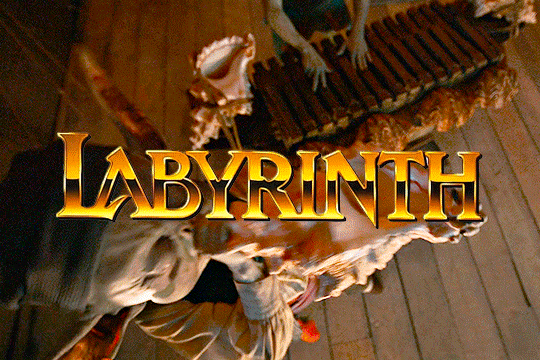

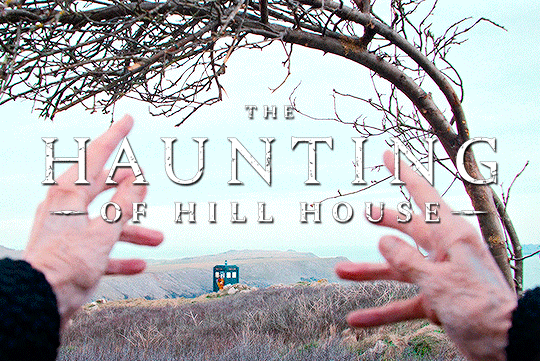

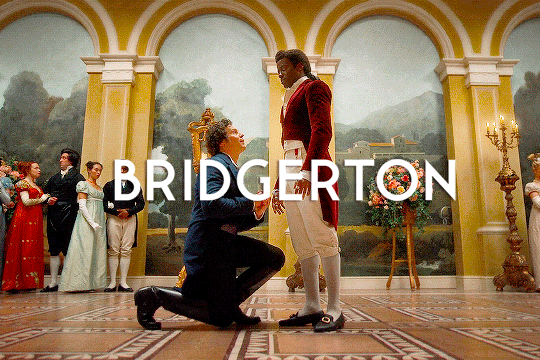

DOCTOR WHO + REFERENCES
3K notes
·
View notes
Text
Book Review: "The Machine Stops", E. M. Forster

I don't usually post reviews for individual short stories, but this one by English author E. M. Forster is so absurdly prophetic and imperative for our current landscape that it felt necessary to share and discuss.
In this narrative, civilization has progressed to a point where everyone lives underground, in rooms filled with artificial light and air, where all of one's needs are met by "the Machine": "through it we speak to one another, through it we see one another, in it we have our being." With technological elements that resemble devices and features we have today, one could easily assume this was written in the 21st century, or, at least, in the last decades of the 20th. But no: Forster wrote about things such as instant messages ("pneumatic post"), videocalls and the Internet as far back as 1909 — reason why this is often considered to be the starting point for technological dystopian fiction.
“You talk as if a god had made the Machine, (...) I believe that you pray to it when you are unhappy. Men made it, do not forget that. Great men, but men. The Machine is much, but it is not everything. I see something like you in this plate, but I do not see you. I hear something like you through this telephone, but I do not hear you."
The author starts the story by saying "Imagine, if you can" — a necessary disclaimer for society in the beginning of the 20th century, but expendable to the contemporary reader: imagining is no issue when many details of this world are terrifyingly similar to our reality (terrifyingly evocative, namely, of the lockdown we experienced globally in 2020). Human relations are entirely virtual, replacing "direct experience" (which is considered a waste of time), while people are used to getting everything they need and want immediately, within the confines of their rooms. So "irritation — a growing quality in that accelerated age" is prevalent, while books have become obsolete. Only one was left, acting as a sort of bible: the Book of the Machine.
Besides the obvious general implications of the hyper-development of technology, one particularity struck me the most: there was a "button that produced literature." This instantly recalled to me the current discussions about A.I. and how carelessly it's being used as a replacement for art and individual creation:
“Beware of first-hand ideas! (...) Let your ideas be second-hand, and if possible tenth-hand (...) And in time (…) There will come a generation that had got beyond facts, beyond impressions, a generation absolutely colourless".
Both in fiction and in our reality, the practicality of such technology is chosen to the detriment of its ecological consequences:
"But Humanity, in its desire for comfort, had over-reached itself. It had exploited the riches of Nature too far. Quietly and complacently, it was sinking into decadence, and progress had come to mean the progress of the Machine."
The third and last chapter poses the question implied by the title: what happens when the Machine stops? In the narrative, the answer is clear; but to the contemporary reader, this interrogation echoes in the mind: what would happen if our machine stopped? We who are so dependent on virtual spaces — to communicate, to craft our identity, to exist... And more and more to shape our critical thinking, and even to create. If the machine stopped, what would we have left?
Reading this in the countryside, surrounded by green hills next to a quiet river, was particularly impactful. In the last few months, "the machine" has taken a toil on my mental health, and a return to nature, to sentience, seems to be the only possible antidote.
#the machine stops#e. m. forster#book reviews#bookstagram#books and flowers#books#book#literature#english literature#book review#short story#dystopia#dystopian literature
1 note
·
View note
Text
"Violence only leads to more violence" TRUE! The thing is tho, a lot of people in power seem to think the start of the violence was the CEO getting shot, but they're wrong. The start of the violence was that very CEO running a company that turns immense, endless human suffering into money.
Violence did lead to more violence, decades of needless death and suffering willfully enacted by millionaires so they can make just a little bit more money, that was the start of the violence. If they didn't want it to escalate eventually, they should have maybe not made killing people the core functionality their entire company hinges on.
The people being tortured and killed by the health insurance industry are not the ones who started the violence, and tbh I don't really think it's on them to end the violence, either.
#I think people need to stop treating this as just some like...random middle class doctor getting offed#and more like a guy who has more influence and money and power than like half the politicians in this country getting assassinated#because he's making bank running a machine that kills people
17K notes
·
View notes